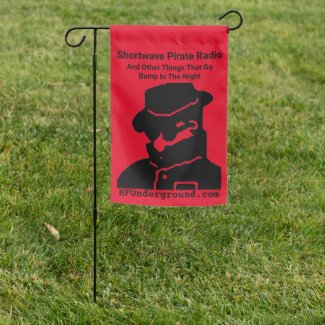I had come across numerous articles from the 1970s-80s indicating the 49mhz band has hot in hobby crowds back then. Here's one of the longer in-depth article from
CB Radio/S9 magazine October 1980 on pages 9 thru 15 Below is quoted from the very beginning of the article. Here's the 🖇️ no to read the whole thing:
https://www.worldradiohistory.com/Archive-CB-Radio/S9-Magazine/S9-1980-10.pdfThe FCC's No-License Hobby Radio Band
Little Known 49MHz
By Tom Kneintel S9's Editor
Do You Know About This "No Holds Barred" (A M/FM/CW & Skip") 2- Way Hobby Radio Band?
Every once in a while we have made some brief mention of the 49 MHz "hobby band" and that never fails to generate a large carton of mail from readers asking for additional information and explanations. Fact of the matter is that it's a nifty but
little known band that offers some interesting challenges to the QRP (low power) communications hobbyist who wants to have some fun without the need for any FCC license. Yes, it's really true!
No FCC license and they say you're allowed to work skip, run 'fone, code, and just about anything else you want. There are a few restrictions relating to the power you run and the equipment in general, but nothing any red blooded communications hobbyist can't live with. All of this is by virtue of the FCC's Part 15 rules.
LET'S GO BACK
In the early days of CB the FCC's Part 15 had authorized this same type of operation within the confines of the 27 MHz band, any frequency was allowed for these communications. Stations designed for low power output could be used on these frequencies, although until S9 siezed upon the concept of hobby experimentation
there, the equipment was mostly used by campers and kids. In our December '62 edition we suggested that Part 15 had definite hobby possibilities, listing them and, in fact, selecting 8 specific frequencies which we thought would have the highest appeal for would-be hobbyists. In the January '63 edition we announced a registration program to issue identification numbers to Part 15 hobbyists, inasmuch
as the stations (not being licensed) had no FCC callsigns.
At the same time, International Crystal Mfg. Co. brought out their Model 1500 Part 15 hobbyist base station, operating with both AM and CW (100 milliwatts input) on all 8 Part 15 27 MHz unofficial hobby channels. The station cost about $300 and complied with all FCC specifications.
Within a few months S9 had registered several thousand Part 15 enthusiasts, most of whom were using inexpensive hand-held "walkie talkies" and having lots of fun. Although the International 1500" was rather expensive for its time, and was made up only in limited quantities, enough of them were sold to permit their owners (I was one of them) to work some legal 27 MHz skip —C W was the best way of getting through.
After a while stations had their own Part 15 QSL cards, and S9 even ran a monthly column catering to the low power DX crowd.
Unfortunately International Crystal couldn't seem to sell a sufficient number of their Model 1500's at the price they needed to ask for the unit and they decided to discontinue the set. No other manufacturers had entered this field with a base station, although hand held units were plentiful.
The Part 15 hobbyist interest started to wane after about 2 years because of these factors, however we did receive mail from hardcore Part 15'ers for several years afterwards.
Since that time lots of things have changed, including Part 15 itself! These days the FCC no longer permits this type of equipment on 27 MHz, although the same general type of operations are
now permitted on 49 MHz. ... ....
Read full article:
https://www.worldradiohistory.com/Archive-CB-Radio/S9-Magazine/S9-1980-10.pdf


